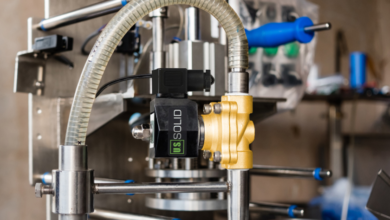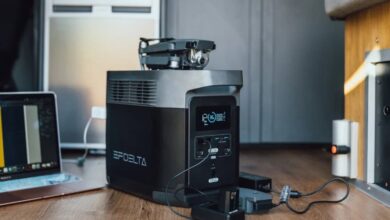Heat Stress OSHA Rule: What It Means for Workplace Safety

Heat stress osha rules are critical guidelines designed to safeguard employees from the serious risks associated with working in high-temperature environments. These regulations outline the responsibilities of employers to prevent heat-related illnesses and ensure a safe workplace. In this article, we’ll break down what the heat stress OSHA rule entails and how businesses can implement effective safety measures to protect their workforce.
Understanding Heat Stress
Heat stress occurs when the body is exposed to high temperatures, humidity, or physical exertion and can no longer cool itself effectively. This causes internal body temperature to rise, leading to dangerous health effects.
Common Heat-Related Illnesses
- Heat cramps: Painful muscle spasms caused by loss of fluids and electrolytes.
- Heat exhaustion: Symptoms include heavy sweating, weakness, dizziness, nausea, and headache.
- Heat stroke: A life-threatening condition where the body can no longer regulate temperature. It requires immediate medical attention.
High-Risk Environments and Worker Groups
Heat stress is more likely for workers in hot outdoor jobs or hot indoor settings (factories, warehouses, kitchens). Workers who do heavy labor or wear protective clothing are also at higher risk.
See also: Vibe Coding and Developer Wellbeing: A New Approach to Tech Culture
What the OSHA Heat Stress Rule Requires
The proposed OSHA heat stress rule emphasizes that employers should take action to prevent heat-related problems before they happen, rather than only responding after an incident. Here’s how that works in practice:
- Hazard Identification
Employers must regularly assess the workplace for heat risks using tools like the heat index and Wet Bulb Globe Temperature (WBGT). This involves measuring:
- Temperature
- Humidity
- Radiant heat sources (sunlight, machinery, ovens, etc.)
- Physical workload levels
High-risk jobs like construction, agriculture, landscaping, foundries, kitchens, warehouses, and manufacturing need extra attention. Employers should monitor workers closely and stay aware of changing weather or sudden temperature increases.
- Heat Illness Prevention Plan (HIPP)
Every worksite must have a written, site-specific plan outlining how heat dangers will be prevented and managed. The plan must include:
- Hydration: Provide enough cool, potable water so workers can drink about 1 quart per hour.
- Rest and Shade: Offer shaded or cooled rest areas for recovery during breaks.
- Emergency Response: Clear action steps for responding to heat exhaustion or heat stroke, including who to call, how to cool the worker, and how to communicate with emergency services.
- Acclimatization: Gradually increase workload for new or returning workers to help their bodies adjust safely to hot conditions.
- Worker Protections
Employers must ensure workers receive essential heat protection:
- Clean, cool drinking water is available near work locations.
- Shade or cooling areas where workers can take breaks safely.
- Mandatory rest breaks when heat levels reach specific thresholds.
- Active monitoring: Supervisors should carefully watch for warning signs such as confusion, slurred speech, or nausea, and take immediate action if any symptoms appear.
These steps help prevent heat exhaustion, heat stroke, and other serious illnesses.
- Training Requirements
OSHA requires that both workers and supervisors receive training so they can:
- Recognize early signs of heat stress (cramps, dizziness, heavy sweating, headache).
- Apply prevention strategies like drinking water regularly and taking rest breaks.
- Follow emergency procedures quickly and correctly.
Regular refresher training ensures everyone stays informed as conditions, tasks, and seasons change.
- Monitoring and Recordkeeping
During hot weather, employers must take extra precautions:
- Monitor heat conditions: Use WBGT meters, heat index tools, wearable sensors, or buddy systems to check temperature and worker well-being.
- Document actions: Keep records of training, hazard assessments, heat incidents, and safety measures taken.
- Maintain compliance evidence: Use electronic logs or mobile apps to track temperatures, rest breaks, and responses to heat risks. These records are helpful for inspections or safety audits.
This structured system ensures employers stay proactive, protect workers from heat-related risks, and meet OSHA’s heat stress compliance requirements.
Additional Employer Responsibilities
Beyond basic protections, employers have several key duties under the proposed heat stress rule:
- Frequent Monitoring – Regularly check high-risk work areas for temperature spikes, humidity changes, or other environmental risks. Use tools like WBGT devices, heat index monitors, or sensors.
- Emergency Preparedness – Ensure first-aid supplies are available, designate trained responders, and have clear procedures for treating heat-related illnesses, including when to call EMS.
- Acclimatization Tracking – Monitor new or returning workers as they gradually adapt to heat, adjusting workloads and schedules accordingly.
- Communication – Inform all workers about heat risks, warning signs, prevention strategies, and emergency procedures.
- Provide Heat-Safe Work Practices: Adjust workloads, schedules, and rest periods based on heat conditions.
- Ensure Access to Water and Shade: Make drinking water and cool or shaded areas readily available at all times.
These responsibilities help create a safer work environment, prevent heat-related illnesses, and ensure regulatory compliance.
Why Early Compliance Matters
Taking action before the rule is finalized has real benefits:
- Fewer injuries and illnesses.
- Better productivity, since workers perform better when safe and comfortable.
- Reduced liability and penalties.
- Higher morale, showing workers that their well-being comes first.
The proposed rule encourages employers to build a safer, well-prepared workplace that keeps employees protected while improving overall efficiency and operations.
Benefits of Proactive Compliance
Taking early action to prevent heat stress offers several important advantages for employers and workers:
- Protects Worker Health: Reduces the risk of heat-related illnesses and serious medical emergencies.
- Improves Productivity: Healthy, well-hydrated workers perform better and maintain consistent output.
- Enhances Morale: Employees feel valued and safer, boosting engagement and job satisfaction.
- Reduces Liability: Minimizes the likelihood of workplace incidents and potential fines or legal issues.
- Demonstrates Commitment to Safety: Shows regulators, employees, and the public that the company prioritizes health and workplace safety.
- Supports Operational Continuity: Preventing heat-related incidents helps avoid disruptions, absenteeism, and lost work hours.
Proactive compliance turns heat safety from a reactive requirement into a strategic approach that benefits both workers and the organization.
Staying Ahead with Heat Monitoring Tools
Using heat monitoring tools helps employers proactively manage heat stress risks before they become emergencies. Devices like the Scarlet TWL-1SV Heat Stress Meter measure WBGT and heat index conditions in real time, providing instant alerts to supervisors.
Key Benefits
- Early Detection: Spot dangerous heat conditions before they affect workers.
- Proactive Safety: Enables planning, hydration, rest breaks, and task adjustments to prevent heat illnesses.
- Regulatory Compliance: Helps meet OSHA heat stress requirements and provides documentation for inspections.
- Worker Protection: Reduces the risk of heat-related illnesses and improves overall workplace safety.
- Operational Efficiency: Maintains productivity by preventing heat-related downtime.
By integrating heat monitoring tools into daily operations, companies can protect employees, demonstrate a commitment to safety, and stay ahead of regulatory requirements.




